Call Center Analytics
Discover actionable insights that help optimize support quality and agent utility.

What Is Call Center Analytics?
Call center analytics help businesses monitor data on agent and customer interactions to drive informed strategies and data-driven decisions. Using the insights from KPIs, metrics, and contact center analytics, businesses develop a deeper understanding of customer expectations. Such a comprehension helps businesses optimize their support quality and agent performance.
Benefits Of Call Center Analytics
Stay on top of evolving customer trends and achieve optimal service quality to ultimately gain a leading edge in the business scape. Here are the other important benefits of call center analytics.
Improve agent performance
Call center analytics helps supervisors monitor agent performance in real time and offer constructive feedback which helps improve their functioning.
Higher sales
Call center analytics tools help spot emerging trends and patterns in customer behavior and expectations. Such an observation helps businesses leverage opportunities from the evolving trends.
Optimize workforce utility
Contact center analytics help businesses gauge various information including peak call times, average call handling rate, staff requirements, etc. The data helps optimize agents' utility and performance.
Enhances customer satisfaction
Call center analytics provide data on customer sentiments and expectations, using which agents can offer personalized support ultimately leading to enhanced customer satisfaction.
Cost savings
Contact center analytics software helps sort and filter valuable information on spending vs returns. Businesses can use the insights to control costs and reduce customer attrition.
New selling opportunities
A robust contact center analytics solution curates real-time customer responses that help businesses put forth personalized strategies and find new selling avenues.
Start your Free Trial today
From number buying to inviting your users to making your first call, all it takes to set up your virtual phone system is 3 minutes.
- Buy Numbers
- Add Users
- Start Calling
- Track Calls
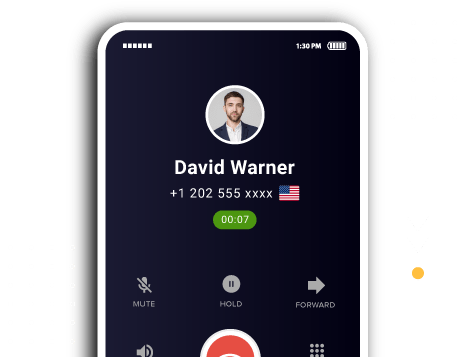

Comprehensive Call Insights
- Get detailed analytics on key metrics such as call duration, call volume, and wait times, optimizing overall call center performance.
- Evaluate agent productivity by tracking individual call metrics, including response time and call handling efficiency.
- Gain insights into customer behavior trends by analyzing call patterns, allowing the customization of services.
- Effortlessly spot key conversations through detailed call data analysis, helping teams to prioritize crucial customer follow-ups.
Instant Call Transcriptions
- Eliminate the need for manual note-taking—every call is transcribed in real-time, so your agents can focus on what really matters.
- Access full transcripts of past calls instantly, making it easy to reference key details and ensure nothing is missed in follow-ups.
- Use accurate call transcripts to train new agents and review conversations for quality assurance.
- Quickly find specific keywords or phrases in transcripts, allowing your team to efficiently locate important information.


Live Sentiment Analysis
- Immediately gauge customer emotions during calls, allowing agents to adjust their approach on the spot.
- Know when conversations are turning negative so that your team can step in early and address the problem.
- Provide agents with real-time feedback on customer satisfaction to help them improve their communication skills.
- Leverage sentiment data to better understand customer needs and make smarter, more empathetic decisions.
IVR Analytics
- Gain insights into your IVR system’s performance to ensure customers are directed to the right departments quickly.
- Review customer interactions with your IVR system to improve and adjust automated responses.
- Monitor key metrics like drop-off rates and call completion times, helping to identify and resolve any bottlenecks.
- Use detailed IVR analytics to continuously refine your system, ensuring customers enjoy a hassle-free experience every time they call.

Integrate with Your Preferred Apps
Integrate all the necessary tools from the CallHippo App Marketplace to further streamline your communication processes.
Modern Software Features

Call Monitoring
Call monitoring refers to the process of listening to a representative’s calls with the objective of improving the quality of communication and customer service.

Smart Switch
Multiple telephony providers before placing a call. You can now safely bid adieu to all your call connectivity issues.
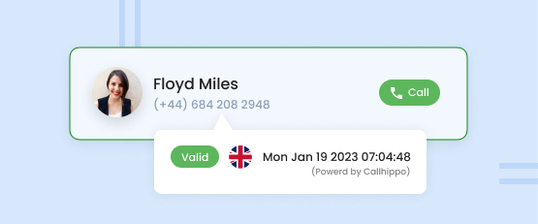
Global Connect
Global Connect helps you know the right time to call your international clients.

Smart Call Forwarding
Each user can choose to have calls forwarded to several phones, to remain reachable even on-the-go.

Call Transfer
The Call Transfer feature allows you to redirect a connected call from your phone number to a team member.
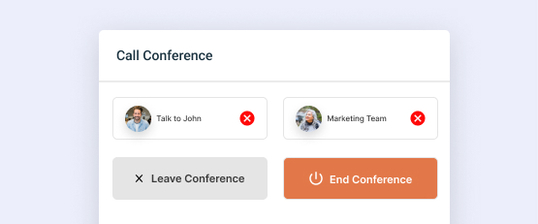
Call Conference
It’s a feature that will enable you to add a third person to your two-way call and turn it into a 3-way conference.

Call Queuing Software
A Call Queue places incoming call in a line when the agent is busy attending other customers.
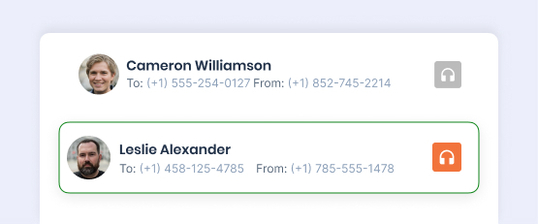
Call Barging
Call Barging is when a supervisor who is silently monitoring the call decides to enter the conference bridge.
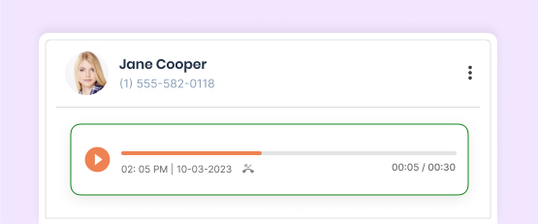
Call Recording
Record call on each of your numbers to better monitor your performance as a team.
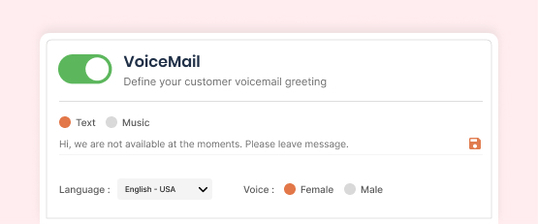
Voice Mail
Receive voicemails by email in your inbox. Play them directly from your email.
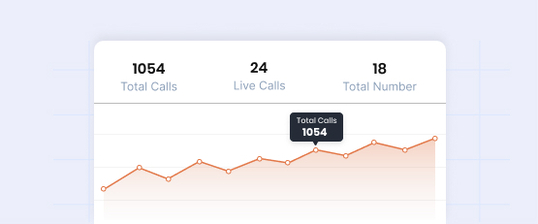
Call Analytics
Track agents performance. Measure the % of missed calls, call load of each teammate, etc.
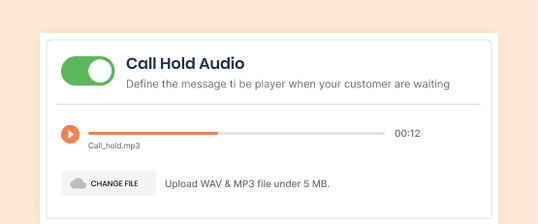
Call Hold Audio
On Hold Music from CallHippo is a great way to keep your callers happy and engaged while on hold or upload your own custom music.
Pricing
- Unlimited Minutes (Includes Both Landline & Mobile Calling)Free minutes are shared by all account users. Calling on special and premium numbers are excluded. For manual calls only.
- 1 Free Phone NumberEach user gets one free phone number. A single number can be assigned to multiple users for making and receiving calls.
- Smart Dashboard
- Paid Call RecordingAdditional charges of $0.005/min are applicable.
- Multiple Integrations
- User Rights
- Chat Support
- Everything in Bronze +
- Unlimited Minutes (Includes Both Landline & Mobile Calling)Free minutes are shared by all account users. Calling on special and premium numbers are excluded. For manual calls only.
- Live Call
- Role-based Access Control
- Free Call Recordings
- Pause-Resume Recording
- After Call Work
- Call Dispositions
- Everything in Silver +
- Unlimited Minutes (Includes Both Landline & Mobile Calling)Free minutes are shared by all account users. Calling on special and premium numbers are excluded. For manual calls only.
- Auto Dialer (Power, Parallel & Speed to Dial)Telephony extra.
- Unlimited QA Users
- Voice Broadcasting
- AI Reports / AnalyticsSmart reports that summarize user & call activity.
- Single Sign On (SSO)Securely log into multiple apps with one set of credentials.
- AI Smart DID Routing
- Hide Number From Agent
- Free Omnichannel Inbox
- Call & SMS Automation
- AI Chat Agents
- AI Workflows
- CSAT Score
- Free Flow Builder
Talk To Us
- Includes all features from past plans
- Minimum 20 Users
- Unlimited calling to 48 countries
- Customized Add-ons for other countries & SMS
- Power Dialer, Parallel Included
- Speech Analytics Or CallHippo AI included
- Priority Support1-hour response time guarantees, designated support team oversight, tailored proactive monitoring and 24/7 support.
- Custom ReportsCustomised reports for tracking teams KPI's.
- Custom OnboardingPersonalised guidance for feature activation and better usage of core CallHippo features.
- Custom data storage and API usage.
- Developer SupportNeed Developer access for support required in software integration.
- Dedicated Account Manager
- Dedicated Compliance SupportTailored assistance from our Legal and Compliance teams to meet specific cybersecurity and documentation needs.
- Unlimited Minutes (Includes Both Landline & Mobile Calling)Free minutes are shared by all account users. Calling on special and premium numbers are excluded.
- 100 SMS (Text Messages)Standard A2P charges apply.
- 1 Free Phone NumberToll-free number not included.
- Basic Report Analytics
- Everything in Starter +
- Unlimited Minutes (Includes Both Landline & Mobile Calling)Free minutes are shared by all account users. Calling on special and premium numbers are excluded.
- 500 SMS (Text Messages)Standard A2P charges apply.
- Call Recordings
- AI Reports / AnalyticsSmart reports that summarize user & call activity.
- Everything in Professional +
- Unlimited Minutes (Includes Both Landline & Mobile Calling)Free minutes are shared by all account users. Calling on special and premium numbers are excluded.
- 1000 SMS (Text Messages)Standard A2P charges apply.
- Dedicated Account Manager
- Custom Integrations
- Single Sign On (SSO)Securely log into multiple apps with one set of credentials.
Talk To Us
- Includes all features from past plans
- Minimum 20 Users
- Unlimited calling to 48 countries
- Customized Add-ons for other countries & SMS
- Power Dialer, Parallel Included
- Speech Analytics Or CallHippo AI included
- Priority Support1-hour response time guarantees, designated support team oversight, tailored proactive monitoring and 24/7 support.
- Custom ReportsCustomised reports for tracking teams KPI's.
- Custom OnboardingPersonalised guidance for feature activation and better usage of core CallHippo features.
- Custom data storage and API usage.
- Developer SupportNeed Developer access for support required in software integration.
- Dedicated Account Manager
- Dedicated Compliance SupportTailored assistance from our Legal and Compliance teams to meet specific cybersecurity and documentation needs.
Frequently Asked Question
-
There are eight types of call center analytics and they include, - Speech analytics - Text analytics - Predictive analytics - Interaction analytics - Desktop analytics - Mobile analytics - Self-service - Cross-channel Analytics.
-
Contact center analytics tools help monitor agent performance and customer sentiments in real-time using several KPIs like average call handling rates, peak hour volumes, average queue length, first contact resolution rates, etc.
-
Call center analytics help businesses boost their revenue, maximize agent utilization rates, enhance customer satisfaction, reduce costs and overheads, and improve agent productivity.
-
The first step in analyzing call center data is to determine the key metrics and KPIs based on your goals and objectives. Then, it is important to collect good-quality data and analyze them using a reliable contact center analytics software solution.

Automatically dial from a list to reduce manual work and increase the number of outbound calls.
Start Free Trial
